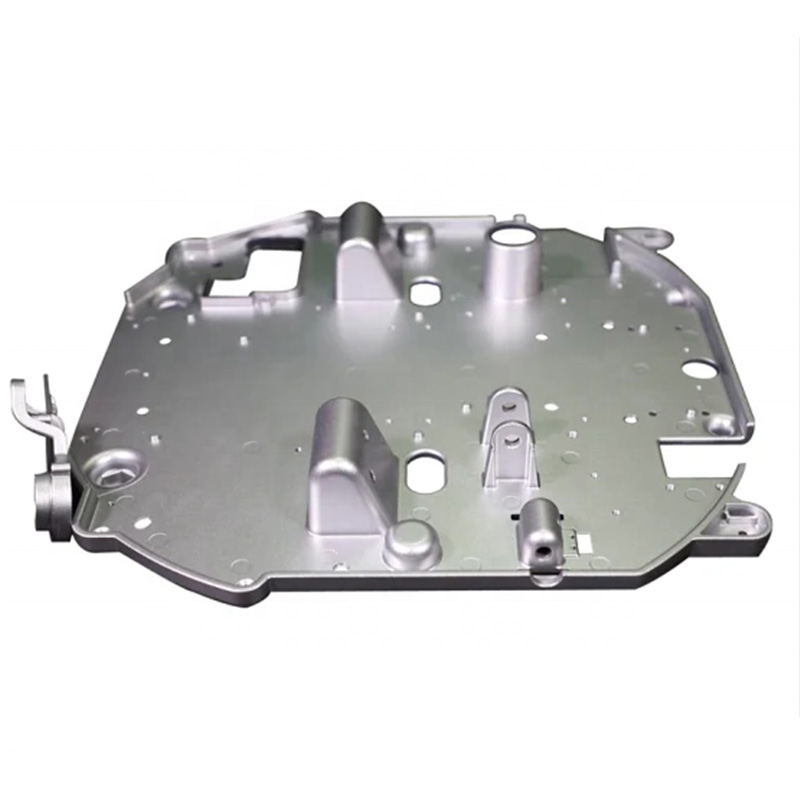Metal Parts Fabrication: The Backbone of Modern Manufacturing
2025-03-22
In the world of modern manufacturing, the role of metal parts fabrication cannot be overstated. From automotive to aerospace, construction to electronics, metal parts are integral components in the production of a wide variety of products. Metal parts fabrication is a highly skilled and precise process that involves shaping metal materials into components that meet specific requirements and tolerances. This blog will explore the significance of metal parts fabrication, the different methods involved, and the industries that rely on this essential service.
What is Metal Parts Fabrication?
Metal parts fabrication refers to the process of transforming raw metal materials into finished products or components through various methods such as cutting, bending, welding, machining, and assembly. This process involves using different tools and machinery to manipulate metals into the desired shapes, sizes, and properties. The goal is to produce metal parts that meet exact specifications and are suitable for their intended application.
The metals used in fabrication can include steel, aluminum, copper, brass, and other alloys, each chosen for their specific properties, such as strength, durability, conductivity, or resistance to corrosion. The fabrication process can be performed on both ferrous and non-ferrous metals, depending on the requirements of the project.
Methods of Metal Parts Fabrication
1. Cutting
Cutting is one of the most basic processes in metal parts fabrication. It involves using tools like saws, lasers, water jets, or plasma cutters to slice metal into the desired shape. Precision cutting ensures that the metal parts meet the required dimensions with minimal waste.
2. Bending
Bending is another crucial method in metal fabrication. It involves using machines like press brakes to bend metal sheets or plates into specific angles or shapes. Bending is used in a variety of industries, especially in the creation of structural components, pipes, and automotive parts.
3. Welding
Welding is the process of joining two or more metal parts together using heat or pressure. Different welding techniques, such as MIG (Metal Inert Gas) welding, TIG (Tungsten Inert Gas) welding, and stick welding, are used depending on the materials involved and the desired strength of the joint. Welding is commonly used in the construction of frames, machinery, and complex metal structures.
4. Machining
Machining involves the use of cutting tools to remove material from a workpiece to achieve the desired shape. Common machining processes include milling, turning, drilling, and grinding. Machining is particularly important for producing high-precision parts, such as gears, shafts, and intricate components used in the aerospace and automotive industries.
5. Stamping
Stamping is a metal forming process where a die is used to shape metal sheets into specific forms, often used for mass production of parts like automotive body panels, electrical enclosures, or components for consumer electronics. The process is fast and efficient, making it ideal for large production runs.
6. Finishing
After the metal parts are fabricated, finishing processes are applied to improve the appearance, durability, and functionality of the parts. Common finishing techniques include powder coating, anodizing, painting, or polishing. These processes help protect the metal from corrosion, enhance its aesthetic appeal, and provide a smooth, clean surface.
Applications of Metal Parts Fabrication
The applications of metal parts fabrication are vast and varied, spanning a wide range of industries. Some of the most notable industries that rely on metal parts fabrication include:
1. Automotive Industry
The automotive industry is one of the largest consumers of fabricated metal parts. From engine components to body panels, suspension systems to exhaust components, metal parts fabrication plays a critical role in the production of vehicles. Fabricated metal parts provide strength, durability, and safety to vehicles, and advanced fabrication techniques allow for lightweight, high-performance components.
2. Aerospace Industry
In the aerospace sector, metal parts fabrication is essential for creating parts that must withstand extreme conditions. Components such as aircraft frames, wings, landing gear, and engine parts require precise fabrication to ensure safety and performance. The use of advanced materials like titanium and specialized fabrication techniques is common in this industry.
3. Construction and Infrastructure
Metal parts are widely used in the construction industry for creating structural components such as beams, columns, frames, and supports. These parts are essential for the safety and stability of buildings, bridges, and other infrastructure projects. Metal fabrication also plays a crucial role in the manufacturing of heavy equipment used in construction, such as cranes and excavators.
4. Electronics Industry
The electronics industry relies on fabricated metal parts for the production of enclosures, heat sinks, connectors, and brackets. These components are essential for the protection, assembly, and performance of electronic devices. With the increasing demand for precision and miniaturization in electronic products, metal parts fabrication has become more specialized and intricate.
5. Energy and Power Generation
In the energy sector, particularly in power generation, metal parts fabrication is critical for producing components used in turbines, generators, and reactors. The strength and reliability of fabricated metal parts ensure that power plants and renewable energy systems function efficiently and safely.
6. Medical Industry
The medical industry also benefits from metal parts fabrication, especially in the production of surgical instruments, implants, and medical devices. High precision and biocompatibility are essential in this field, and metal fabrication plays a key role in creating safe, functional, and durable medical products.
The Importance of Quality in Metal Parts Fabrication
Quality is paramount in metal parts fabrication, as these components often need to meet stringent industry standards and specifications. A failure in the fabrication of metal parts could result in costly delays, product recalls, or even safety hazards. That’s why it is crucial to work with experienced fabricators who use the latest technology, adhere to strict quality control processes, and are familiar with the specific requirements of the industry.
The use of advanced machinery, such as computer numerical control (CNC) machines, ensures that each part is fabricated with high precision and consistency. Regular testing and inspection, including non-destructive testing (NDT), are conducted to verify the integrity and quality of the fabricated metal parts.
Conclusion
Metal parts fabrication is an essential process that serves as the foundation for the production of countless products across various industries. The techniques used in metal fabrication enable manufacturers to produce high-quality, precise components that are critical to the function, performance, and safety of a wide range of products. As technology continues to evolve, the demand for advanced metal fabrication methods will only increase, making it a key driver of innovation and progress in modern manufacturing. Whether it’s building the next generation of vehicles, aircraft, or medical devices, metal parts fabrication remains a crucial aspect of the industrial landscape.



